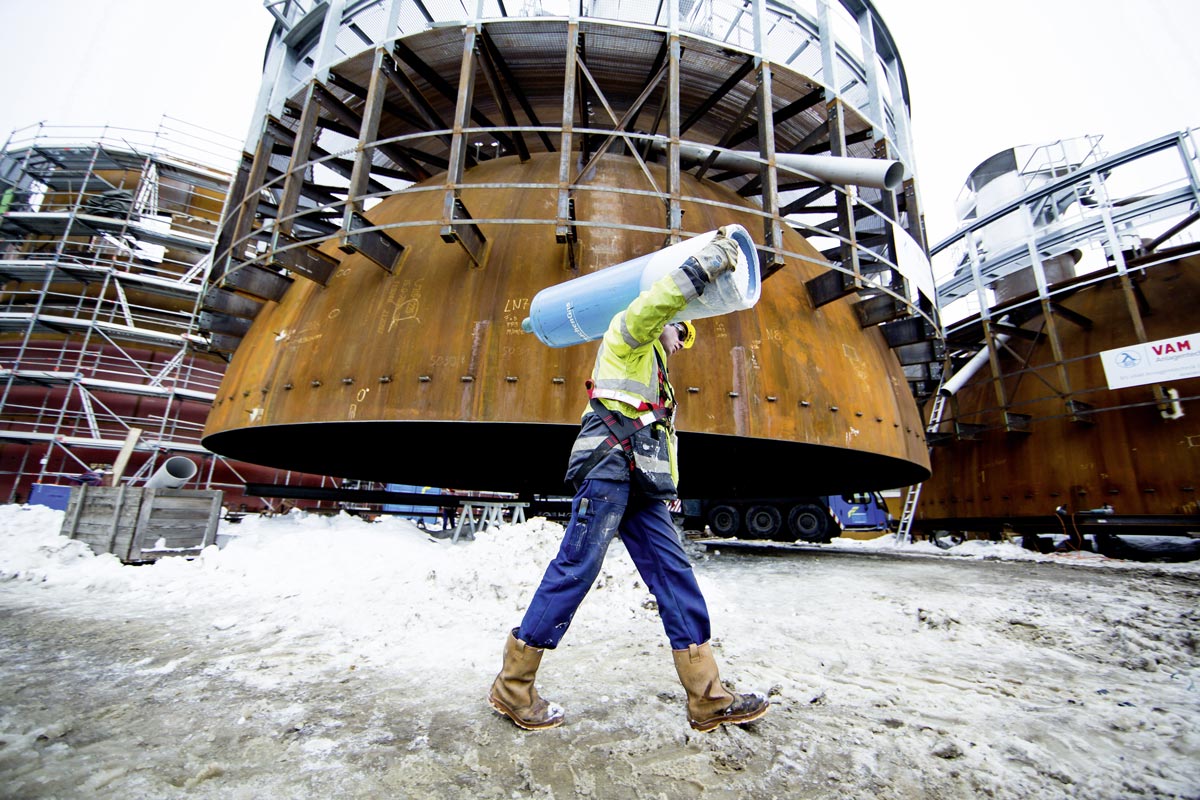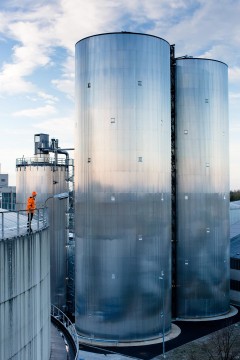More than 330,000 households in Vienna and more than 5,600 major consumers are supplied with heat for space heating and hot water via the Vienna district heating network. The City of Vienna‘s Smart City Strategy is intended to cover 20 % of gross final energy consumption from renewable sources by 2030 and 50 % by 2050. Technologies for harnessing renewable sources of energy, such as deep-lying geothermal energy and solar energy, play an important part here.
17 generator facilities (CHP units, thermal incineration plants, biomass facilities, peak-load boilers, and in future geothermal energy) at 12 locations in Vienna supply the high-temperature district heating network. The bulk of the heat comes from cogeneration in Wien Energie‘s thermal power stations and an OMV facility; about a third comes from incineration, and a small proportion from peak-load boilers that are in operation only in winter, as the need arises. Because altitudes vary by as much as 150 m in the Vienna district heating network, the water for space heating and hot water must be transported at high pressure, at temperatures between 95 °C and 150 °C.
Storing heat at high pressure
In 2013 the world‘s first high-pressure, high-temperature storage facility started operation in Vienna Simmering. The new facility has made it possible to uncouple producing and consuming heat from each other. When demand for heat is low, hot inflow water is now pumped from various production facilities, such as a plant that runs on wood chips, the CHP facility in Simmering and some waste-processing plants, into the storage facility and held over for peaks in demand.
The core of the facility consists of two identical storage tanks with a total capacity of 11,000 m3. The facility uses thermally stratified storage: the tank is always full of water, hot at the top, cold down below. The difference in density keeps the two layers separate. If demand for heat increases, hot water from the tank is pumped directly into the district heating network, while cold water is fed in to compensate for this. Storage capacity is roughly 850 MWh; hot water is supplied to the tanks for about 2,200 hours a year, and drawn off for about 2,200 hours.
As surplus heat is stored, the peak-load boilers are needed less often when demand for heat is high, so less primary energy is consumed; this makes Vienna‘s district heating system even more energy-efficient and environmentally sound – in the storage facility‘s first year of operation savings in CO2 emissions came to roughly 8,800 tonnes.

„The high-pressure heat storage facility fits in perfectly with our energy strategy. By 2030 we want to cover 50 % of our production capacity from renewable sources. To achieve this, we focus massively on innovative, sustainable solutions. Not just making more use of renewable sources of energy is an issue – the proper functioning of the entire supply system is far more important. That is why expanding the use of renewables must go hand in hand with expanding storage capacities and with greater efficiency in consumption and production. With this step we succeed in setting a keystone of the energy transition.“
Susanna Zapreva,
CEO, Wien Energie
Improving operation by means of simulation
Scientific support for planning and constructing the facility was provided by the Institute for Energy Systems and Thermodynamics at Vienna University of Technology as part of the research project “Pro WäSpe”, in collaboration with Wien Energie.
At an early stage the project team developed a process simulation program with which to map the complex storage system and simulate transient operational states. Dynamic simulation computation was used to identify improvements in the overall process, which were then implemented directly. To ensure that the storage system operates reliably, pressure and time windows involving losses are necessary. Within the project these have been minimized, which has improved the steps of storing and discharging heat (in particular).
In the light of simulating and analysing operational states, electricity consumption has been cut and the time taken to store and discharge heat has been shortened. Dynamic computation has not only made the heat storage facility more reliable in operation, but has economized on fossil fuel and reduced CO2 emissions.
Timelapse video construction of the high-pressure heat storage facility,
Video: Wien Energie/MirAlf Filmproduktion
Share




